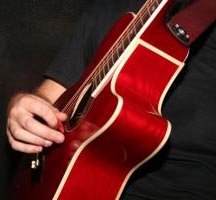“I want music to be like food. A water or wine.” Chinese opera singer Shenyang (whose voice is amazing) describes music as a necessity. It certainly has been in my tangles with migraine. I honestly don’t know how I could have coped, particularly in the last eight years, without the joy music brings. (And I’m not alone in this.)
I’ve found that listening to music I love is more important than choosing a genre typically thought of as relaxing. My all-time comfort album is the first disc of Dave Matthews & Tim Reynolds playing a live acoustic show. That’s when the migraines are really bad. Most of the time I listen to hippie jam bands and afrobeat/funk/soul − anything that gets my head bobbing or hips swaying.
This may sound crazy considering that a primary characteristic of migraine is that movement worsens pain. Sometimes “dancing” is almost imperceptible foot tapping, other times even that is impossible. When I dance, especially at live shows, I let go of myself and my self-consciousness completely. That release is therapeutic even in memory. When I dance at home, in the car or in my mind during a migraine, my body remembers that freedom and loosens up.
Dancing with Pain blogger Loolwa Khazzoom believes so strongly in the power of dance as a chronic pain therapy that she teaches classes in it. What about you? Have you found dancing or listening to music to be effective in managing migraine?
I was going to include a photo of me dancing at a Phish show last summer. I share so much on this blog, but the picture of me lost in music is just too intimate.

 I was in a horrible mood the day before I
I was in a horrible mood the day before I